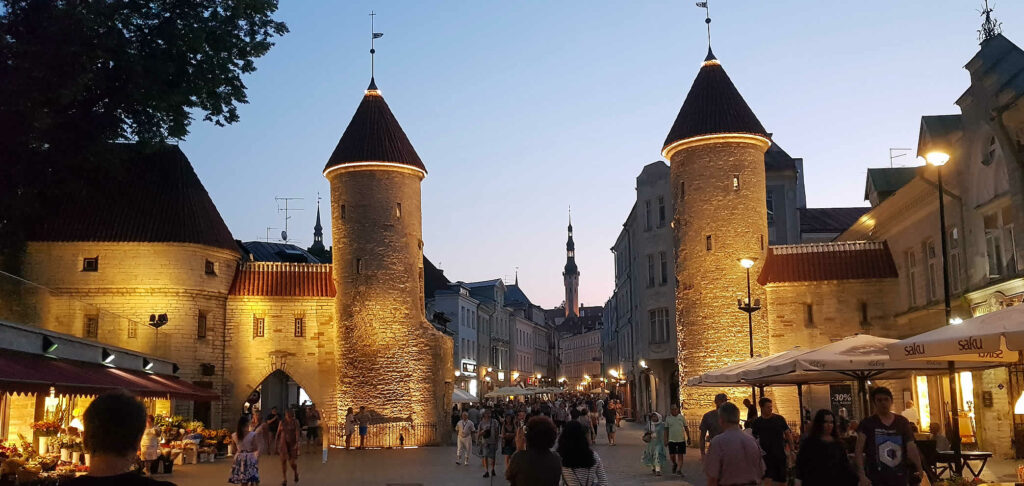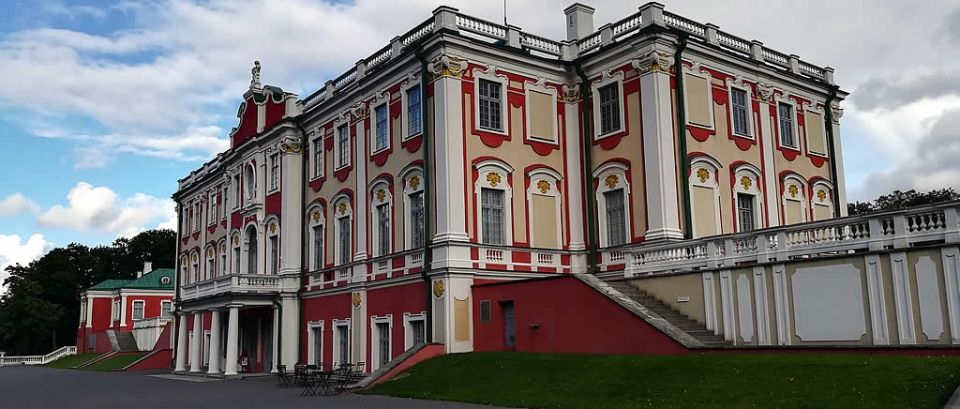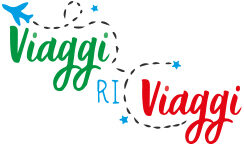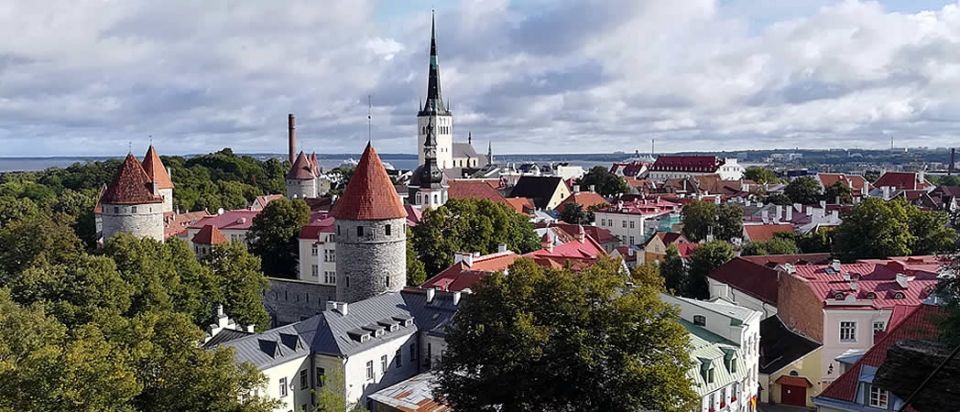Tallinn (in German Reval; in Finnish Tallinna; in Russian Таллин, Tallin in Italian) is the capital of Estonia (Baltic Republics) and its main port. Located on the northern coast of the country, it faces the Baltic Sea and is separated by 80 kilometers of sea from Helsinki, located further north. The medieval Old Town, an ancient Hanseatic port, became a UNESCO World Heritage Site in 1997. In 2023, the city received the European Green Capital Award.

History of Tallinn
The history of Tallinn begins with the first Finno-Ugric communities that settled in the area around 2000 BC. Since then, this fascinating Estonian capital has gone through a series of significant events. Here is a brief summary:
- Early settlements: Tallinn was first mentioned on a world map by Al-Idrisi. In the 11th-12th centuries, the Livonian Brothers of the Sword settled in the region, making the city a contested place.
- Danish rule: During the Battle of Lyndanisse in 1219, according to legend, the current Danish flag fell from the sky, leading Valdemar IV to victory against the local population.
- Hanseatic League: Tallinn became an important strategic, cultural, commercial, and industrial center. The city prospered thanks to commercial activities and the development of urban infrastructure.
- Russian Empire: After various changes of hands between Poles, Swedes, and Russians, Tallinn was definitively incorporated into the Russian Empire after the Treaty of Nystad.
- 20th century: Tallinn survived World War I and became the capital of the Republic of Estonia until 1940, when the first Soviet occupation occurred. In 1991, independence was proclaimed.
- Culture: Besides the architectural beauty of the historic center, Tallinn was the European Capital of Culture in 2011, with a rich tradition of music, theater, art, and literature.
In summary, the history of Tallinn is a fascinating journey through the centuries, from medieval legends to modern challenges.
What to see in Tallinn
Tallinn is a very charming city that we recommend everyone to visit. Here are some must-see attractions:

- Old Town: A UNESCO World Heritage Site, Tallinn’s Old Town is a maze of medieval streets, ancient architecture, and secret courtyards. Explore the cobblestone alleys, admire the historic buildings, and visit the Niguliste Museum for a panoramic view.
- Town Hall Square: The heart of the Old Town, Town Hall Square hosts the Town Hall and the oldest pharmacy in Europe. Here, in 1441, the first public Christmas tree in the world was erected.
- Toompea Hill: Home to the Estonian Parliament, Toompea Hill offers spectacular viewing platforms. Admire St. Mary’s Cathedral and Alexander Nevsky Cathedral.
- Lennusadam Seaplane Harbour: A unique maritime museum located in a seaplane hangar. Explore ships, submarines, and maritime history.
- St. Olaf’s Church: Climb the tower of this Gothic church for a breathtaking panoramic view of the city.
- Kadriorg: Visit Kadriorg Palace, an elegant Baroque castle surrounded by a picturesque park.

- Pikk Tanav and Vene Streets: These streets are full of shops, cafes, and historic architecture.
- Defense Towers: Explore medieval towers like Nunna, Sauna, and Kuldjala.
- Church of the Holy Spirit: Admire the Gothic architecture of this 13th-century church.
- Lahemaa National Park: Get out of the city and visit this national park with forests, lakes, and coasts.
Curiosities about Tallinn
Tallinn is truly a fascinating city, full of history and curiosities to discover! Here are some interesting facts that might interest you:
- The Christmas tree tradition: The custom of decorating Christmas trees originated in Tallinn in 1441. Here, the first large fir tree was erected in the center of Raekoja Plats, the Town Hall Square, and since then it has become a tradition during the Christmas holidays.
- The only Gothic-style Town Hall: Tallinn hosts the only Gothic-style Town Hall in all of Northern Europe. Its spire is crowned by the depiction of Old Thomas, the legendary guardian of the city, who is found inside the Town Hall.
- Ghosts of the Upper Town: Toompea Hill, the upper part of the city, is shrouded in mysteries and legends. The Danish King’s Garden is considered one of the most haunted places in Tallinn, with ghosts of Dominican friars praying with luminous crosses.
- Hi-tech and digital innovation: Tallinn is the most technologically advanced capital in Europe. Here, digital innovation has developed, with advanced Internet, e-commerce, and telephony software.
- The 23rd floor of the Hotel Viru: During the Soviet occupation, the Hotel Viru had a secret floor used to spy on foreign guests. Today it is open to the public and offers a unique panoramic view of the city.
Tallinn is a Baltic gem, rich in history and architectural beauty. Have a great trip!

